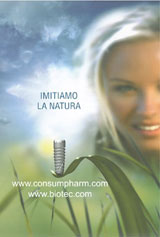Biotechnological Equipment
Advanced search
Article
Biotechnology & Biotechnological Equipment 27 (3), 3787 - 3790 (2013)
http://dx.doi.org/10.5504/bbeq.2013.0019
AGRICULTURE AND ENVIRONMENTAL BIOTECHNOLOGY
WATER QUALITY AND ECOLOGICAL STATE ASSESSMENT OF THE BLAGOEVGRADSKA BISTRITSA RIVER (SOUTH-WEST BULGARIA) BASED ON MACROZOOBENTHOS COLLECTED BY TWO SAMPLING STANDARDS
Lidia Sakelarieva1, Emilia Varadinova2
- South-West University, Faculty of Mathematics and Natural Sciences, Blagoevgrad, Bulgaria
- Bulgarian Academy of Sciences, Institute of Biodiversity and Ecosystem Research, Sofia, Bulgaria
Correspondence to: Lidia Sakelarieva E-mail: sakelarieva.lidia@swu.bg
Abstract
Complex investigations of the Blagoevgradska Bistritsa River, left tributary of the trans-boundary Struma River, were carried out in the summer of 2008. Seven representative sites were sampled. Physico-chemical parameters such as water temperature, pH, oxygen concentration, oxygen saturation, conductivity, nitrates and phosphates were measured. The biological assessment was based on macroinvertebrate communities – one of the obligatory biological quality elements according to the Water Framework Directive requirements and the national legislation. Canonical Correlation Analysis (CCA) was used for the explanation of the site–physico-chemical factors relationship. Indices of species diversity (c, e, H), saprobiological index (SR), biotic index (BI) and trophic index (RETI/PETI) were used to determine the water quality and the ecological state of the water bodies.
According to the values of the physico-chemical parameters, indices of species diversity and the saprobiological index, the water quality of the sites from the source to the city of Blagoevgrad was I – II category. The ecological state was assessed as high, according to BI and high and good, based on the trophic index RETI. The water quality at the Blagoevgradska Bistritsa mouth, influenced by the waste waters of the city of Blagoevgrad, was assessed as II – III category, and the ecological condition, as moderate and poor (BI) and bad (PETI). The distribution of the physico-chemical parameters at the ordination diagram divided the studied sites into two groups: upstream (clean, unaffected sites) and downstream (anthropogenically influenced sites) of the city of Blagoevgrad.
Two periods of investigation (2002–2003 and 2008) and two standard methods for macrozoobenthos sampling (handnet sampling of aquatic benthic macroinvertebrates and quantitative samplers for benthic macroinvertebrates on stony substrata in shallow freshwater) were compared. The results showed that for a five-year period of time changes in the water quality and the ecological state of the studied sites had not been observed. The two sampling methods gave similar results as regards the values of the indices used.
Keywords
Blagoevgradska Bistritsa River, macrozoobenthos, water quality, ecological state assessment


